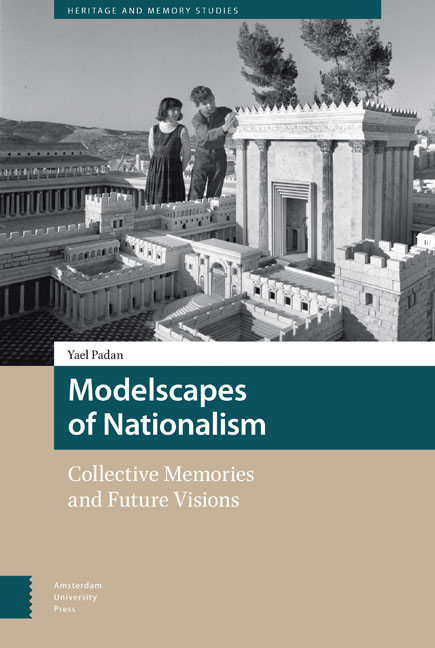Book contents
- Frontmatter
- Dedication
- Contents
- List of Illustrations
- Preface
- Introduction: Narratives into Objects, Objects into Narratives
- 1 The Qualities of Modelscapes
- 2 Models and Modern Perceptions of Nationalism
- 3 The Second Temple Model
- 4 Mini Israel
- 5 The Valley of the Communities
- Conclusions
- Bibliography
- Index
3 - The Second Temple Model
Published online by Cambridge University Press: 12 February 2021
- Frontmatter
- Dedication
- Contents
- List of Illustrations
- Preface
- Introduction: Narratives into Objects, Objects into Narratives
- 1 The Qualities of Modelscapes
- 2 Models and Modern Perceptions of Nationalism
- 3 The Second Temple Model
- 4 Mini Israel
- 5 The Valley of the Communities
- Conclusions
- Bibliography
- Index
Summary
‘If Jews cannot get to the holy places, the holy places will come to them.’
– Hans Kroch, founder of the Second Temple Model (quoted in Cherni and Tsafrir, 14).The Second Temple Model from Jerusalem is well-known in Israel and has been widely studied. However, scholars have generally focused on issues concerning its historical accuracy rather than on its qualities as a modelscape. In this chapter I examine the Second Temple Model using as guidelines the main theoretical questions posed at the outset, in order to explore how it achieves a sense of authenticity, empowerment and participation, how it conveys meaning, and how the visual and bodily experience at this model is translated into narrative.
Analyzing this site called for certain methodological tools. The Second Temple Model is an educational model, originally focused on providing a tangible expression of history, archaeology and heritage to an Israeli Jewish audience. Its aims and audiences have developed and changed during its own history since it was opened to the public in 1966. Therefore, this chapter focuses on the model's design process and history. I used interviews with people involved with its creation and maintenance, and historical documents in order to highlight the intentions of its creators. These included guidebooks, archival material, and newspaper articles.
Changes in the political and social context brought about changes in the audiences which visit the model, and at present Christian tourists form a large part of its visitors. In addition, the relocation of the Second Temple Model in 2006 has caused significant changes in the way the model is presented to its visitors. In order to explore these changes, I analysed books, guidebooks and articles published at the time of its relocation. I also conducted semi-structured interviews with people who were involved in the relocation and in its current management and curatorship.
The Second Temple Model (fig. 8) is a modelscape that is not only a representation of an external referent, built in the image of a heritage site, but rather has an independent existence and is gradually becoming a heritage site in its own right.
- Type
- Chapter
- Information
- Modelscapes of NationalismCollective Memories and Future Visions, pp. 75 - 120Publisher: Amsterdam University PressPrint publication year: 2017



